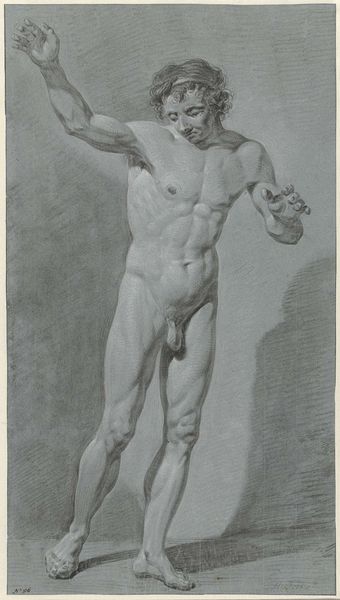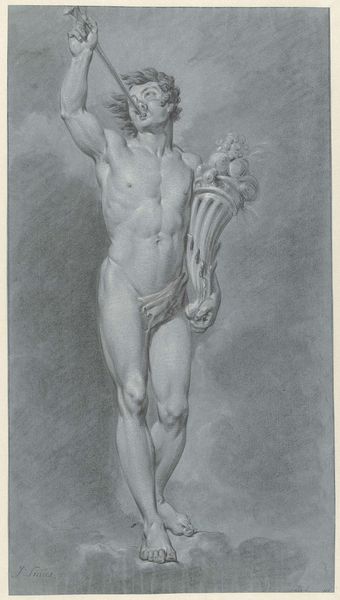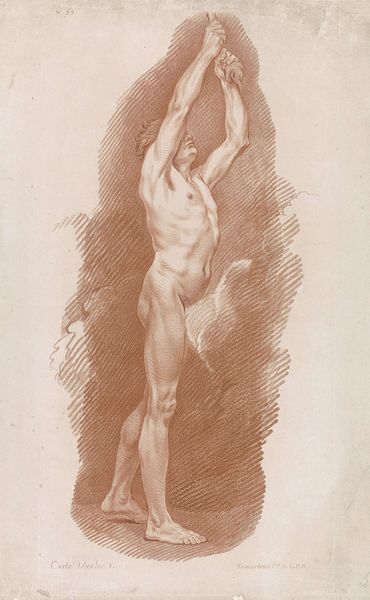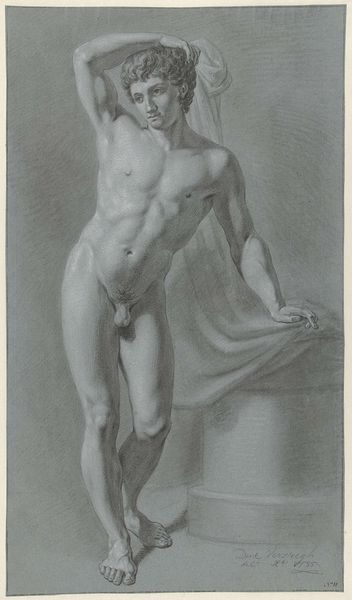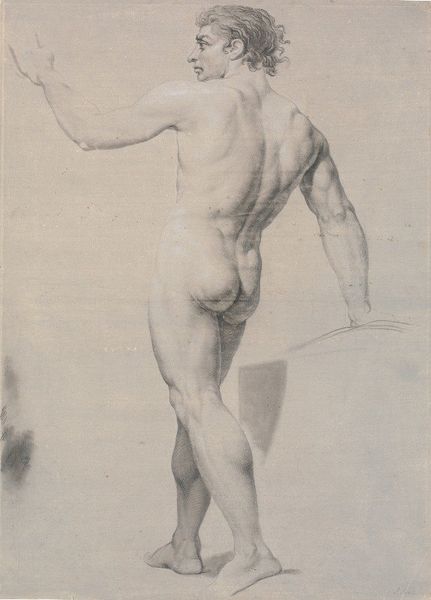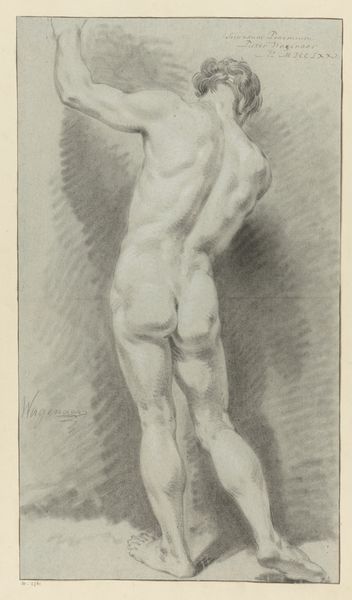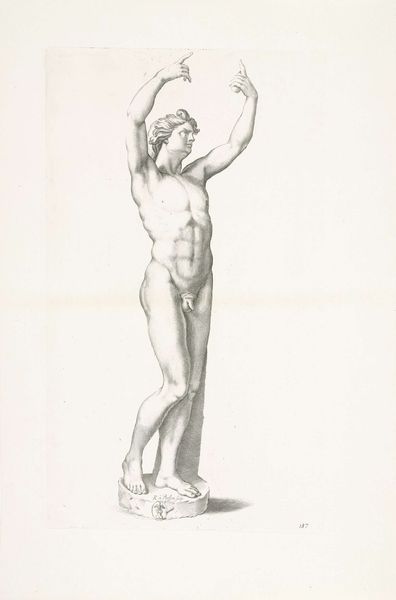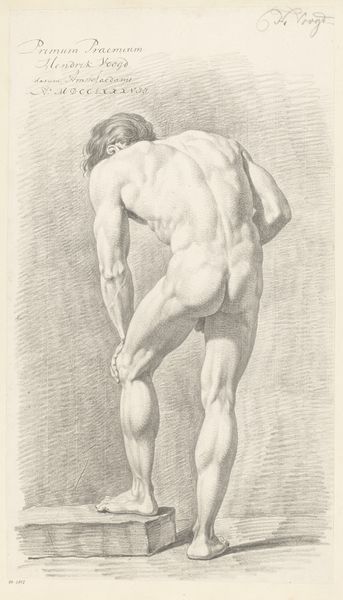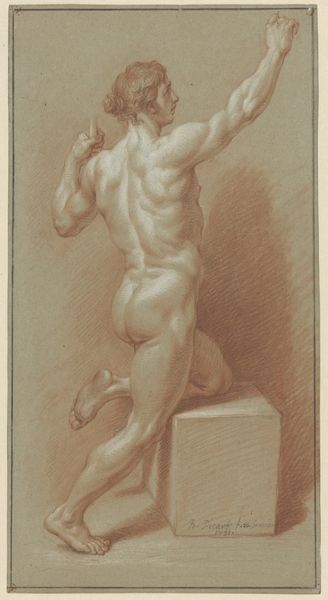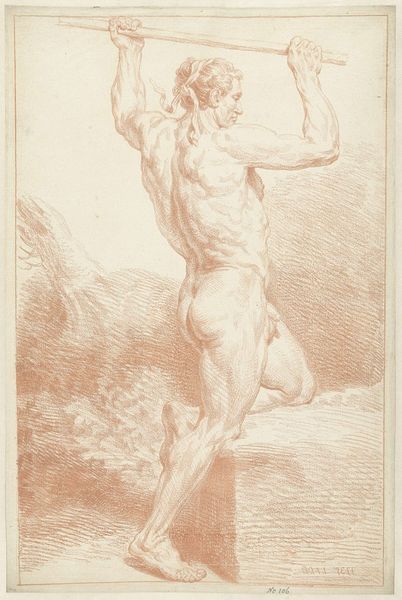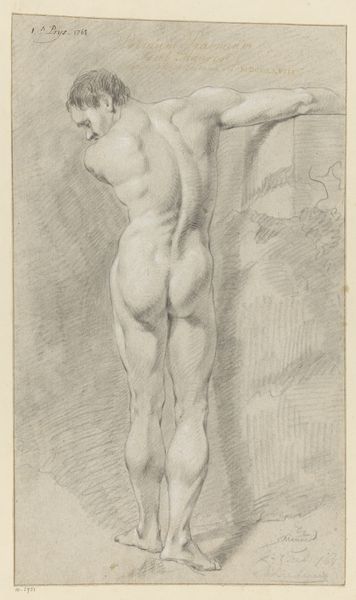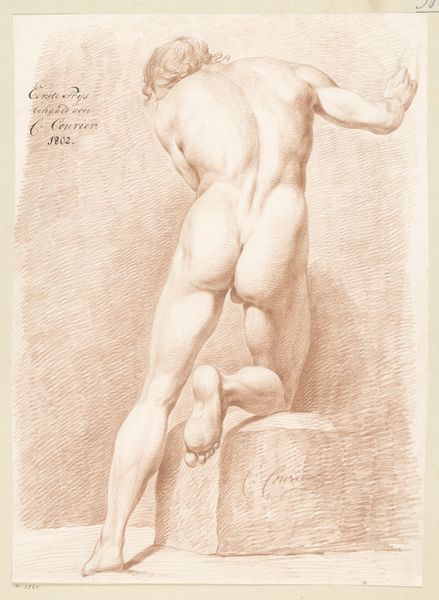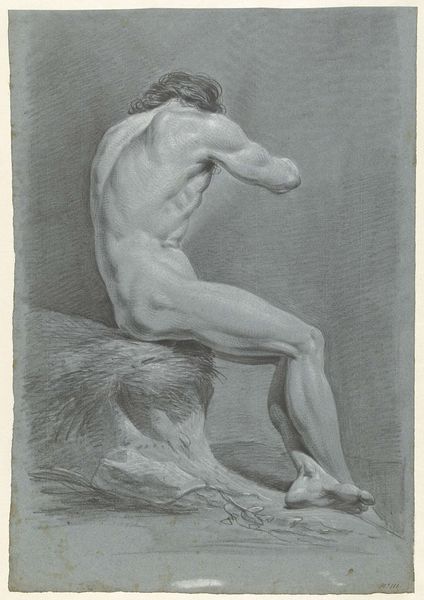
drawing, pencil
#
drawing
#
pencil sketch
#
figuration
#
pencil drawing
#
pencil
#
academic-art
#
nude
#
realism
Dimensions: height 545 mm, width 320 mm
Copyright: Rijks Museum: Open Domain
Curator: Here we have "Standing Male Nude, Seen From the Back, With Right Arm Raised," a pencil drawing from 1787. It’s quite a striking image. Editor: Indeed. My immediate impression is one of power, but also of isolation. The raised arm could be interpreted in so many ways. Is he in triumph, in despair, or something in between? Curator: It’s interesting you say that, because academic drawings like this, particularly of the nude male figure, were so central to the art academies of the time. They represented an ideal, a striving for perfection based on classical ideals. It was also meant to represent virtue. Editor: Precisely. That idealized body is carrying a whole historical and political weight. Think about how that representation of power excludes so many other bodies. The white, male, able-bodied subject has historically dominated our visual narratives, so that triumphant pose rings hollow to some of us. Who isn't given the stage here? Curator: And yet, there's something compelling in how this is depicted, even divorced from those associations. There's a rawness to the medium itself – the graphite on paper – that reveals the hand of the artist. This work lacks color and texture that could easily define the subject. What remains is this essence of masculine form that transcends. Editor: I'd say that what it ultimately represents is a time capsule for gendered norms. A demonstration, through posture, that our assumptions have implications. How many unheard figures were also raising a fist—in struggle or defiance—at that exact moment? We can speculate on what kind of symbolism the original artist wanted to embed. Today, it sparks an altogether different, equally potent response. Curator: I agree, seeing it in that light certainly reframes my initial interpretation. It's less about individual triumph, and more about the system of values inherent within that triumph. Editor: Exactly, we get a glimpse into how art can become both a reflection of—and an instrument for—a particular ideology. Curator: Thank you, this has given me a whole new way to look at a figure I assumed I understood. Editor: Likewise, It’s crucial we stay alert to these subtle gestures within artworks that either echo or question their period's power structures.
Comments
No comments
Be the first to comment and join the conversation on the ultimate creative platform.
